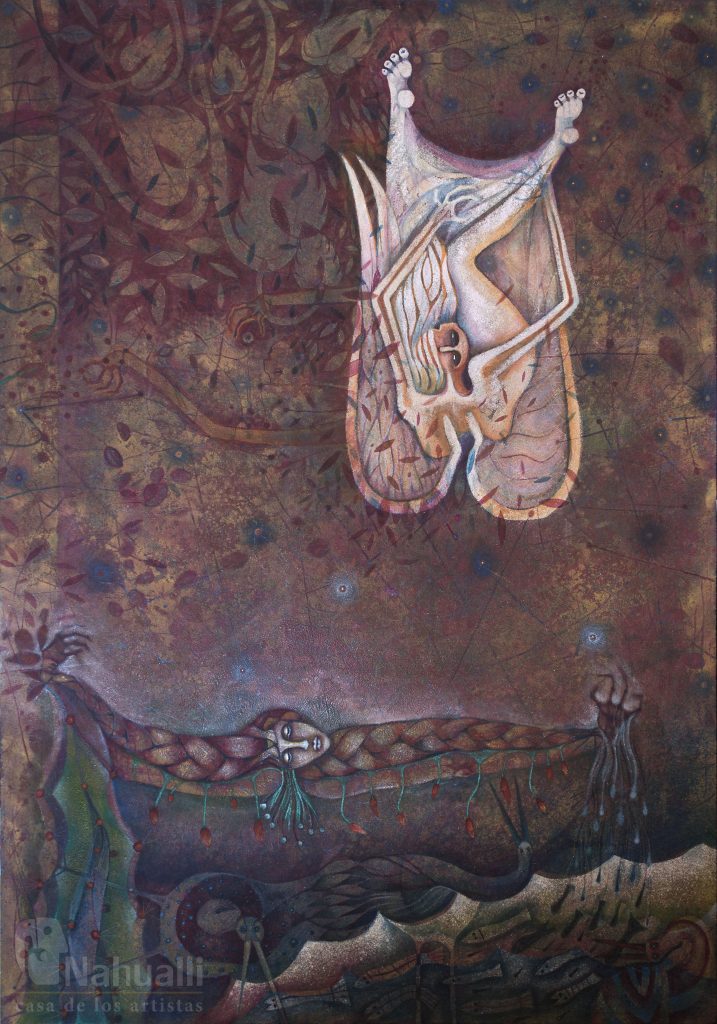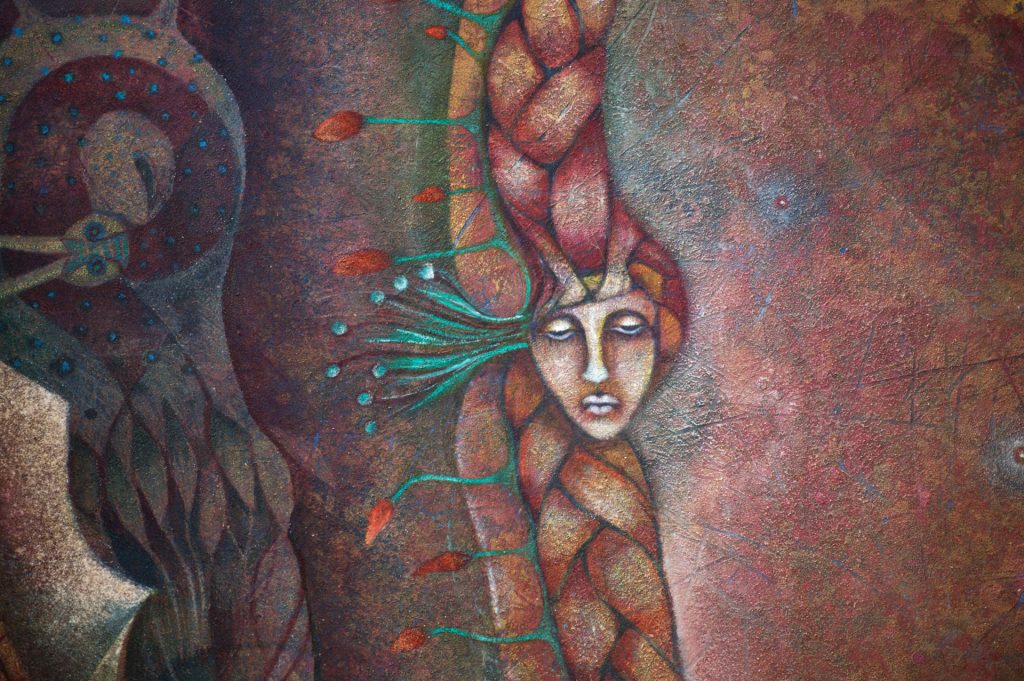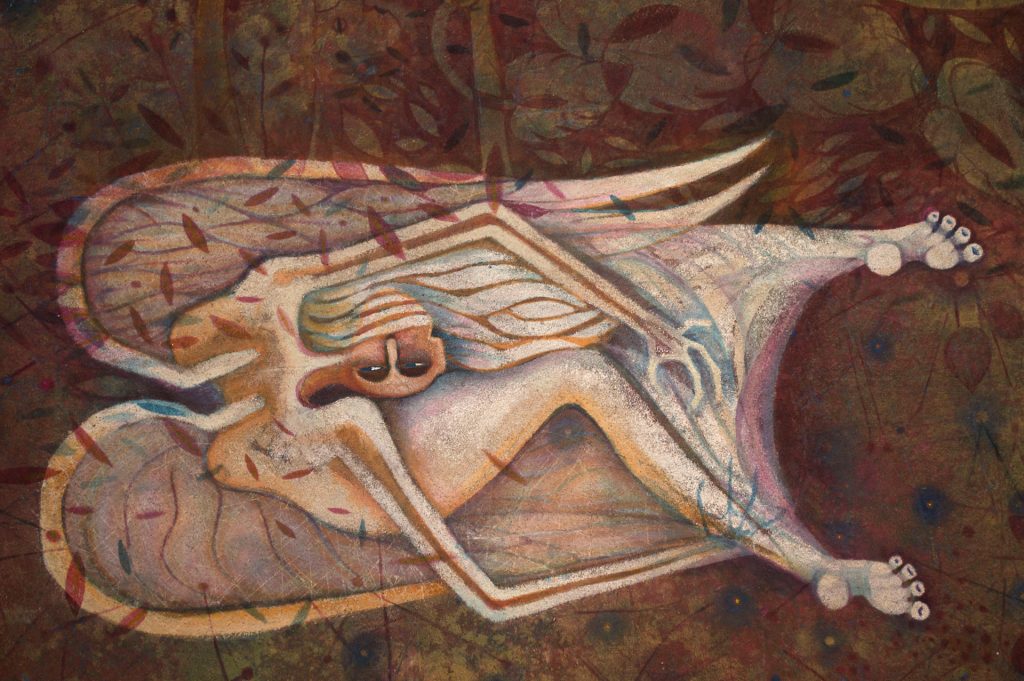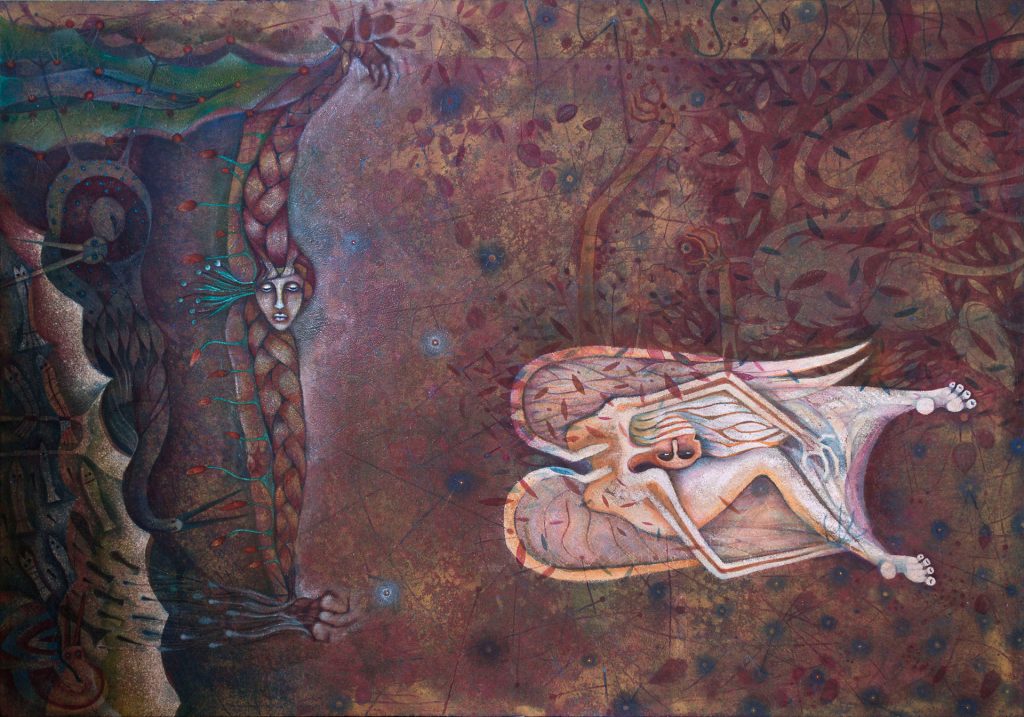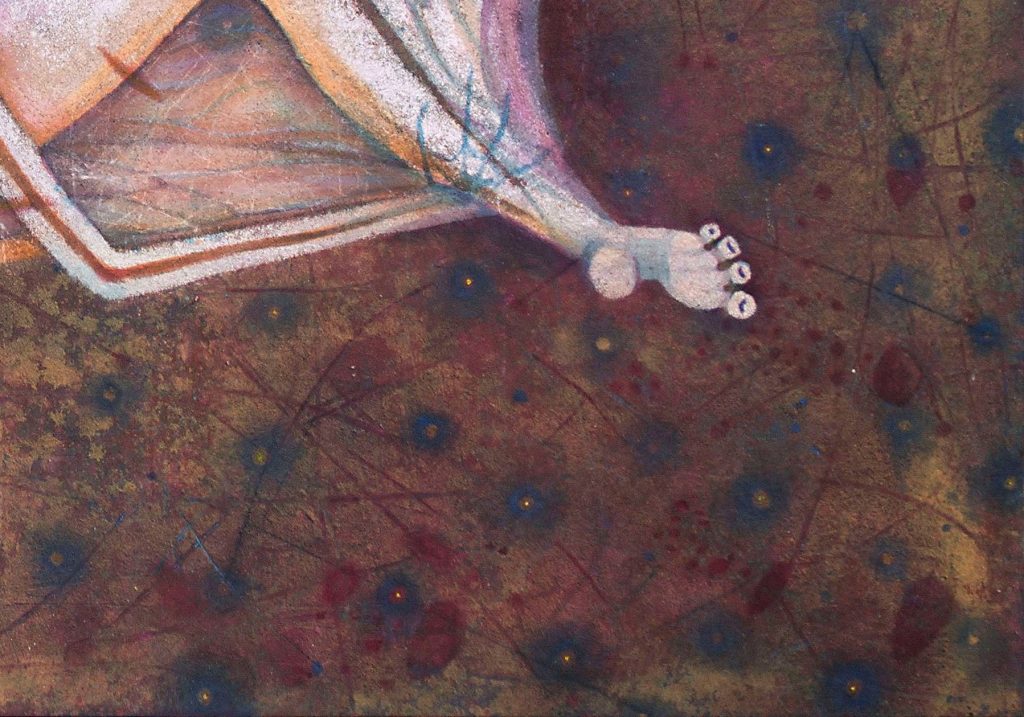“There is no time for things” says Abel Vázquez, joking a little bit about the pun that refers to the name of the work. The time of no time, represents the painter’s two daughters: Citlalli and Meztli, both nature lovers, spiritual beings who are looking for their own time.
The painting is divided between earth and cosmology. The most impressive thing about Abel’s art, is that he always plays not only with his titles, but also with shapes and figures that he portrays. From one side, the painting tells you a story, but if you flip it three more times, you will get different versions of the tale; this is, without a doubt, what makes this work so peculiar yet attractive.
